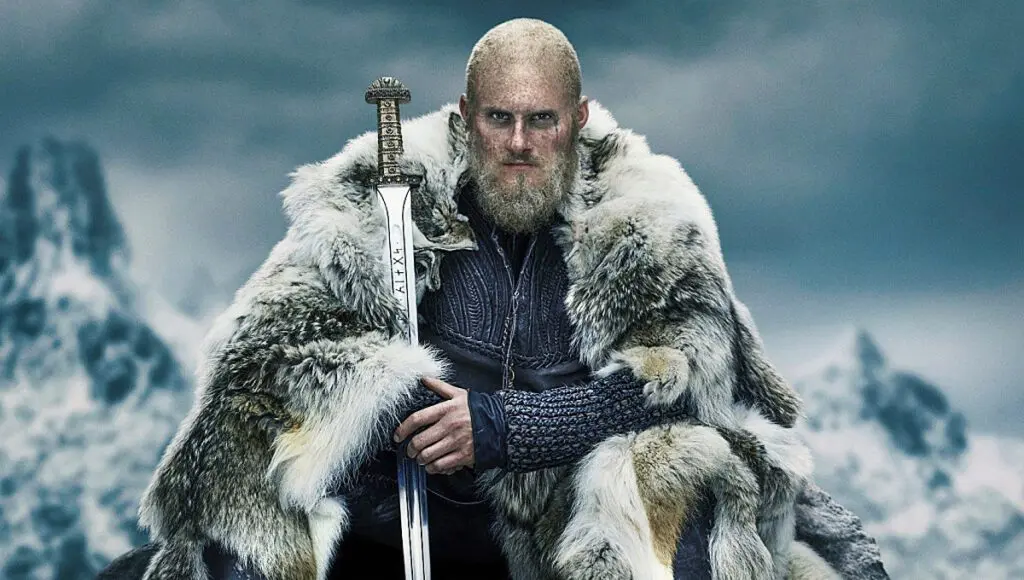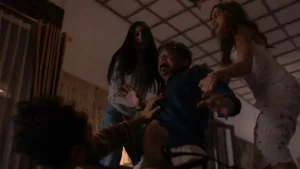You know what they say: too much of a good thing isn’t healthy. That can definitely apply to entertainment. Throughout the history of cinema, we’ve seen various trends pop up in movies and TV shows. Though these can be specific tropes, such as a story’s climax being a giant laser shooting into the sky, they more notably take the form of narrative genres.
To name a few examples, we saw it with the cheesy sci-fi films of the ‘50s, the spy stories of the ‘60s, the martial arts flicks of the ‘70s, and the westerns throughout most of the 20th century. Currently, we’re in the middle of such a pattern with the slew of superhero blockbusters after X-Men and Spider-Man popularized the premise in the early 2000s.
These patterns can last for years, but they always die off. Why is that? Well, viewers simply lose interest, often due to oversaturation. The supply of these works grows so great that it outweighs and diminishes the demand. After a while, producers take the hint and stop the supply. That’s not to say that products fitting that pattern can no longer be made; they’re just fewer and farther between.
A new saga begins…
One trend that appears in full effect right now is a wealth of Viking stories. These hairy, ax-wielding raiders have always been an iconic archetype. Over the past few years, however, these Norse explorers have settled into more and more artistic works, wowing audiences with their adventurous history, expansive society, and fantastical mythology.
Some of these are straight period pieces set during the time of these Northmen while others utilize their culture and iconography to influence their own worldbuilding, aesthetic, and atmosphere. Either way, the Vikings have permeated several branches of our entertainment, and they don’t seem keen to leave.
As for when this trend started, it’s tough to pinpoint an exact time or catalyst. You obviously have examples like Robert Zemeckis’s Beowulf film, the DreamWorks animated feature How to Train Your Dragon, the video game Elder Scrolls V: Skyrim, and the introduction of Thor into Marvel’s Avengers films, all of which used stylized Nordic imagery for their visuals.
Back to the beginning.
However, I think pop culture’s current obsession with these Norse warriors truly began with the appropriately titled 2013 TV series, Vikings. Depicting the saga of Ragnar Lothbrok and his family, this show portrays the Northmen as they first venture west.
Their quest for land, gold, glory, and knowledge takes them to a plethora of exotic locales, such as England, France, and even the Mediterranean. However, their pursuits and fierce religious beliefs lead to bloody conflict with both the inhabitants of these new lands and their fellow Vikings.
Created by Michael Hirst (The Tudors) as the History Channel’s first foray into scripted drama, this show has steadily grown in popularity since it premiered, and that growth is reflected in its budget and production. All you need to do is look at how small-scale and contained the first season looks.
Compare that with later on: we now have colossal sets and massive battles with hundreds of extras across different locales. A couple of years into its run, however, Vikings found a challenger for its crown.
A worthy rival
In 2015, BBC America released The Last Kingdom. This historical adventure is based on a series of novels by Bernard Cornwell of Sharpe fame. Rather than the ensemble that Vikings eventually became, the show mainly revolves around the exploits of one protagonist: Uhtred of Bebbanburg, a Saxon who was taken and raised as a Danish Viking. In his quest to reclaim his birth home, he finds his destiny tied to that of Alfred the Great, the Saxon king who seeks to unite the various squabbling territories into one kingdom of England.
Despite their differences, though, it’s hard to deny the slew of similarities between these two shows, as the Vikings’ invasion of England is prominent in each one. For one thing, they’re both set during roughly the same time period. They even feature some of the same historical figures, such as Alfred the Great and Ubbe Ragnarsson.
In addition, they deal with much of the same spiritual tensions surrounding Christianity, Paganism, and other religions. Although it eventually shifted over to Netflix, The Last Kingdom has also grown more popular as it’s progressed, going for five seasons and counting.
Branching out
This Viking renaissance has extended to the realm of film. In recent years, numerous direct-to-video movies about the Northmen have come to store shelves, digital platforms, and/or foreign markets. For instance, there’s Hammer of the Gods, Northmen: A Viking Saga, The Last King, Viking, Redbad, and Viking Destiny.
While these might seem like low-budget exploitation flicks, some of them boast admirable production values and talent, equipped with prolific actors like Terence Stamp, Jonathan Banks, James Norton, Kristofer Hivju, and Ed Skrein.
The Vikings have found more exposure, however, within another industry: gaming. Since their inception, video games have gradually come into the mainstream as a legitimate and respected form of storytelling, engagement, and entertainment. More and more people have become gamers to some degree, so it makes sense for several high-profile projects to adopt Viking lore and imagery for today’s audiences.
Of course, you have relatively small instances like Rune, a Viking game released in 2000 that only recently got a sequel in 2019. Call me crazy, but the timing seems a little too convenient to simply be a coincidence. You could also point to Lords of the Fallen, a 2014 action RPG that basically applies a Viking coat of paint to the gameplay of Dark Souls, a series based in medieval fantasy.
One could see these products purely as an attempt to capitalize. Perhaps the publishers saw that Norse mythology was “in” at the moment. Unfortunately, neither of these sold well enough to significantly impact the industry.
Breaking in
The same cannot be said for Hellblade: Senua’s Sacrifice. This 2017 dark fantasy title follows a Pict warrior as she struggles to save the soul of her dead lover from Hela, the Norse goddess of death. On a more internal level, Senua must overcome her psychosis, grappling with the voices and hallucinations that constantly blur the line between delusion and reality.
The story is steeped in Viking history and culture. A huge part of Senua’s trauma comes from the terrors reaped on her people by the invading Northmen, and her hallucinations/obstacles all draw from Norse mythology in their designs and functions.
The game was a critical and commercial success, making for yet another Viking product loved by millions of people. Moreover, it helped carve out a place for Nordic tales in mainstream AAA gaming.
An old favorite returns in a new way.
That foothold was strengthened a year later with the 2018’s God of War. Despite its simplistic title, this game is actually a follow-up to the ultraviolent hack-and-slash series. Players follow the epic tale of Kratos, a Spartan warrior who seeks bloody vengeance on Zeus and the other Olympian gods who wronged him. As the names would suggest, the franchise and its setting had obviously drawn from ancient Greek mythology up to that point.
This new entry, on the other hand, shifts focus to a land of Norse legends. Many of the characters, locales, and set pieces are taken directly from Viking myths. Examples include the World Serpent, the nine realms, and the gods like Freya and Baldur.
Kratos even trades his goatee for a thick Viking beard. It also somewhat overlaps with The Last Kingdom in that both soundtracks feature vocals by Faroese singer Eivør.
Now, this is definitely overdone.
As blatant as that sounds, the overlap is much more prominent with the next big Viking product on the horizon: Assassin’s Creed Valhalla. The long-running Assassin’s Creed games depict a secret war between the titular Assassins and the Templar Order, their conflict coinciding and even affecting some of the most famous events in history. This allows players to experience detailed recreations of the Crusades, the Italian Renaissance, the American Revolution, the Golden Age of Piracy, and more.
The franchise’s latest entry focuses on (you guessed it) Vikings, specifically their invasion of England. We have ships; we have settlements; we have castle raids; we have cross-cultural strife; we have ale from curved horns.
It’s all punctuated by Skaldic score that sounds like it was ripped straight from Trevor Morris and Einar Selvik’s Vikings TV soundtrack. It’s all familiar territory at this point. In fact, it’s so familiar that it’s ripe for satire.
Tis but a scratch!
Enter Norsemen. Also known as Vikingane, this 2016 Norwegian comedy series revolves around the day-to-day activities of a Viking village. Unlike other recent works, however, this show’s writing is reminiscent of Mel Brooks, Monty Python, and the Zucker brothers. The dialogue can be tongue-in-cheek to the point of anachronism, but the actors remain deadpan and straight-faced throughout. Most importantly, even the darkest and most outlandish concepts are treated with a casual attitude by everyone involved.
The whole show has an easygoing tone. To these characters, war, slavery, and sacrifice are just another day at the office. The contrast is more striking since the production values are on the level of a serious drama. Oftentimes, the sets and locations look straight out of Vikings or The Last Kingdom. The creators are simply acknowledging the inherent humor of viewing this society through a modern lens. In short, it harkens back to the classic spoofs of old.
What does this all mean?
When you get to parodies, it’s usually a good indicator that your genre is established. Studios and artists are more likely to poke fun at a work if they know there’s an audience for it. Otherwise, no one will get the jokes. As such, it stands to reason that Vikings have firmly settled into the public zeitgeist.
However, that raises an important question: how long can they stay there? The pattern of growth will presumably continue for a time. Studios will probably greenlight more Viking media in the future to capitalize on the current market. This will simultaneously feed said market. Sooner or later, though, that market will collapse.
When it does depends on how much longer the public will consume Viking culture. What once was novel and intriguing will gradually become tired and cliched. Are we on the verge of that shift, or do the Northmen still have a few good raids in them? Only time (or the gods) will tell.




